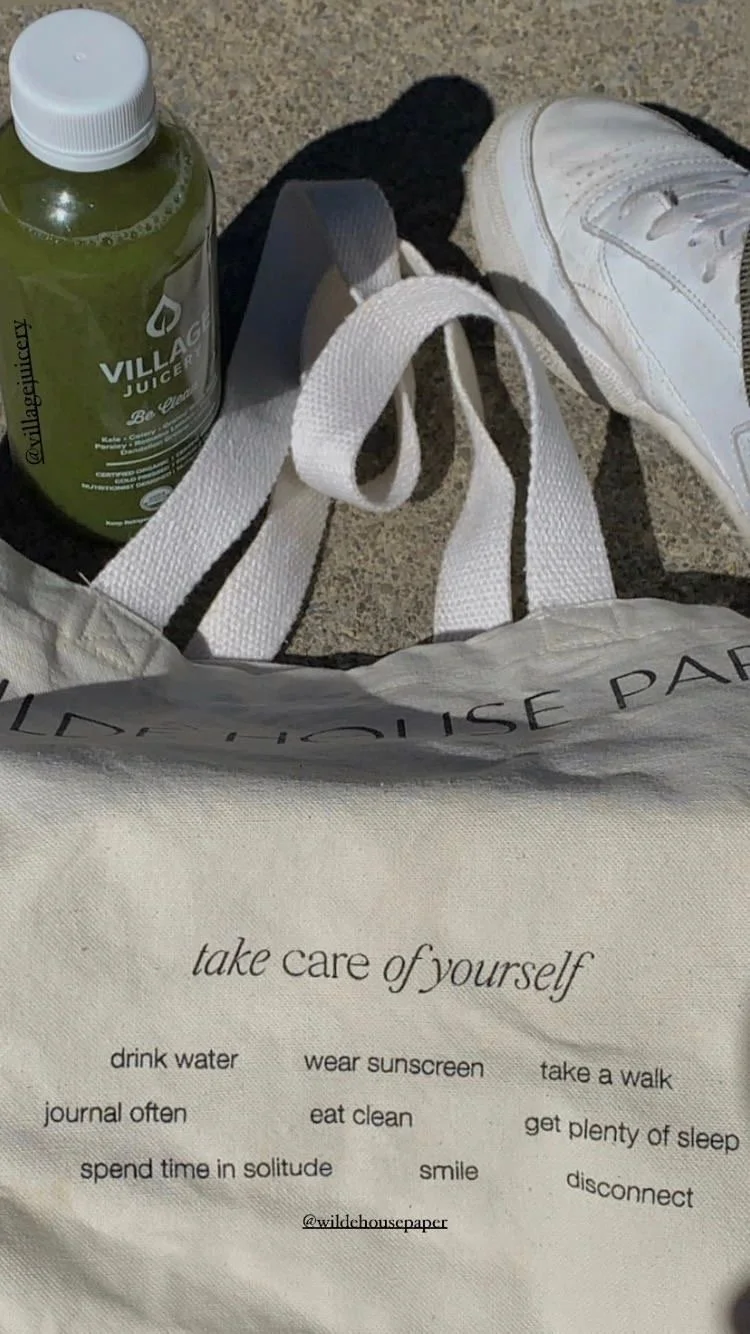As a mom, losing weight is not always a straightforward process. After all, taking care of your little ones can be comparable to a full-time job. But that’s no excuse to engage in unhealthy restriction diets or to rely on dangerous weight-loss drugs.
When it comes to weight loss, it's crucial to approach the journey with self-compassion and understanding. Motherhood brings its unique set of challenges and responsibilities, making it essential to find sustainable and realistic ways to prioritize health and well-being. In doing so, you build positive habits that provide the foundation for a healthy lifestyle.
Instead of aiming for quick fixes or drastic measures, focusing on nourishing the body with whole, nutrient-dense foods and incorporating regular movement that feels good is key. Additionally, practicing self-care and seeking support from loved ones or professionals can make a significant difference in maintaining motivation and staying on track.
In this article, we provide more insight and discuss a holistic approach for mothers to consider in their weight-loss journeys.
No. 1
Get Active
When you’re a busy mom, staying active may be the last thing you want to consider. After all, your whole day may be filled with endless to-do lists and care-taking responsibilities—leaving you with little time for yourself at the end of the day. You might be tempted to sit on the couch for some screen time instead of going outside, for say, a walk. That said, it’s important to prioritize wholesome activities whenever possible; staying active by any means necessary will help keep you healthy and fit.
Here are a few activities for you to consider:
Neighborhood - A brisk walk around the neighborhood with your child in tow encourages walking while allowing you to get fresh air and enjoy the outdoor scenery.
Museum or Garden - With so much to see in museums and gardens, you can be assured that you will be spending most of your time walking around and exploring.
Beach or Pool - Making a trip to the beach or pool is a great way to get outside, and the children enjoy it so much. Enjoying the sun while getting exercise naturally boosts Vitamin D levels, which triggers the production of happy chemicals such as serotonin and dopamine.
Park or Trail - A local park or trail provides an opportunity to enjoy outdoor activities with your children with the added element of good weather and an open environment.
Shopping - A simple outing to a local shop, for instance, can provide you with a break from your normal routines, allowing for movement. Even if it is just through the aisles of a store, you are getting yourself up and active, which makes all the difference.
By incorporating engaging activities that keep you on your feet, you can naturally exert your energy. Walking is not only a simple physical activity but also a powerful tool for staying fit and healthy. Incorporating walking into your daily routine can have a profound impact on your overall well-being; you strengthen your muscles, improve cardiovascular health, and boost your metabolism.
Additionally, walking helps to reduce stress, improve mood, and enhance mental clarity. Whether you choose to walk in nature, around your neighborhood, or on a treadmill, the benefits of this low-impact exercise are endless.
No. 2
Have the Right Mentality
Being thin or losing weight is not always synonymous with being healthy. For that reason, it is important to think about why you are trying to lose weight in the first place. After all, it is more important that you are a healthy, functioning mother for your kids than it is to fit into a stereotypical idea of how much you are expected to weigh.
If you are trying to lose weight solely to look good, that can sometimes result in bad weight-loss habits. At all costs, you want to avoid starving yourself or depriving yourself of proper nutrition. With the wrong mentality, you might beat yourself up about dietary mistakes or times when your diet slips and you binge eat.
Instead, celebrate small victories and consistent effort. Look into educating yourself about proper nutrition and exercise. It is not about a number on a scale, but how you feel and what you are doing to achieve a sustainable and healthy lifestyle.
If you take an 80-20 approach, you will see positive effects on your health. Consider that 80% is about your nutritional habits, which is the most important aspect of your health. Consuming a diet rich in whole and plant-based foods will allow your body to naturally adapt to a healthy weight. 20% is exercise, so if you commit to a regular fitness routine, you will begin to feel and look better as a whole.
No. 3
Optimize Your Sleep
If you are struggling to lose weight, a lack of sleep may be a contributing factor. With poor sleep levels, it is easier to skip out on exercise and order fast food for dinner since you are naturally too tired to cook. Making poor decisions for yourself in general is an outcome of other contributing factors, so try to identify them so you can avoid putting yourself in these situations again.
On the other hand, when you have sufficient sleep, you can tackle the day with a higher level of energy and willpower. It becomes easier to make the right decisions for your health and wellness; you become more eager and able to tackle lifestyle changes when other essentials are also in alignment with your health goals.
Here are tips to improve your sleep:
Avoid Screens at Bedtime - Engaging in screen time before bed can significantly impact your sleep quality and overall well-being. The blue light emitted from screens suppresses the production of melatonin, the hormone that regulates our sleep-wake cycle, leading to difficulties falling asleep.
Additionally, the content we consume on screens, such as social media or news, can evoke strong emotions or stress, further hindering our ability to relax and unwind before sleep.
To promote restful and rejuvenating sleep, it is essential to limit screen time before bed and instead opt for calming activities like reading a book, practicing mindfulness, or gentle stretches.
Stick to a Bedtime Routine - Establishing a bedtime routine isn't just about getting a good night's sleep—it's a powerful tool for unlocking your full potential. Consistency in your evening habits can set the tone for your entire day ahead, impacting your mood, productivity, and overall well-being.
By sticking to a bedtime routine, you signal to your body and mind that it's time to wind down, allowing for proper rest and rejuvenation during the night. This can lead to improved focus, clearer thinking, and better decision-making throughout your day.
Furthermore, a bedtime routine can be a form of self-care, allowing you to disconnect from the day's stresses and indulge in activities that promote relaxation and inner peace. Whether it's reading a book, practicing mindfulness, or engaging in a calming skincare routine, these moments of self-care can nourish your soul and uplift your spirit.
Consistency is key when it comes to reaping the benefits of a bedtime routine. By prioritizing this habit, you enhance the quality of your sleep and cultivate a sense of discipline and self-love.
Avoid Heavy Meals and Caffeine Before Bed - Heavy meals close to bedtime can lead to indigestion and discomfort, making it harder for your body to relax and fall asleep peacefully. Instead, opt for lighter, easier-to-digest snacks if you find yourself hungry before bedtime.
Caffeine, a stimulant found in coffee, tea, and chocolate, can interfere with your natural sleep cycle, making it challenging to achieve restful sleep. It's best to steer clear of caffeine at least four to six hours before bedtime to ensure it doesn't disrupt your ability to fall asleep.
Prioritizing these simple adjustments in your nighttime routine can pave the way for a more restful and rejuvenating sleep, allowing you to wake up feeling refreshed and ready to embrace the day ahead.
Be Physically Active During the Day - Physical activity plays a vital role in promoting better sleep and overall well-being. Engaging in regular exercise helps to regulate your sleep-wake cycle, known as the circadian rhythm, leading to improved sleep quality. Whether it's a brisk walk, yoga session, or a workout at the gym, incorporating physical activity into your daily routine can help reduce the time it takes to fall asleep and increase the overall duration of your sleep.
By being physically active during the day, you release built-up tension and stress, which can contribute to a more restful night's sleep. Additionally, exercise can help reduce symptoms of insomnia and sleep apnea, leading to a more rejuvenating and refreshing sleep experience. Remember to find activities that you enjoy and that align with your fitness level to make staying active a sustainable and enjoyable part of your routine.
Incorporating movement into your day will allow you to experience a positive impact on your sleep patterns and overall health. Physical activity is a natural and effective way to enhance your sleep quality so you can embrace a more energized and revitalized self each day.
When your sleep is in order, your weight loss becomes more achievable. Quality sleep plays a crucial role in supporting our overall well-being, including our metabolism and weight management. Adequate rest allows our bodies to regulate hormones that control appetite and energy expenditure.
With a good night's sleep, you are more likely to make healthier food choices, have the energy for physical activity, and maintain a positive mindset conducive to reaching your weight loss goals. By prioritizing quality sleep as part of your self-care routine, you can significantly enhance your weight loss journey, contributing to your overall sense of well-being.
No. 4
Plan Your Meals
Sometimes, prepping meals ahead of time can be the easiest way to eat healthy. If you have a wholesome meal ready to go for the day, it makes it easier to resist the temptation to eat fast food. After all, if you have nothing planned to eat, fast food easily becomes a convenient option.
Meal planning is a crucial tool for your weight-loss journey, offering structure and organization amidst your busy schedule. By prepping meals in advance, you can ensure healthier eating choices for yourself and your family, setting a positive example for balanced nutrition.
Planning meals ahead allows time and intention for your thoughtful consideration of portion sizes and nutrient-rich ingredients, leading to better control over your caloric intake. It will also save you time and money and reduces the temptation of opting for fast food or unhealthy snacks when hunger strikes.
No. 5
Get Regular Exercise
Regular exercise plays a crucial role in supporting your weight loss journey—offering a myriad of benefits beyond physical appearance. For mothers juggling multiple responsibilities, setting aside time for exercise may seem challenging, but the long-term advantages are invaluable.
Engaging in consistent physical activity not only aids in shedding excess weight but also boosts energy levels, improves mood, and promotes overall well-being. Additionally, regular exercise can help reduce stress, increase strength, and enhance mental clarity—essential factors for moms navigating the demands of daily life.
Prioritizing regular exercise sets a positive example for children, instilling healthy habits that can last a lifetime. By making self-care a priority through exercise, you can experience physical transformation and a profound sense of empowerment and vitality.
Here are fitness practices to consider to get regular exercise:
Yoga - A holistic practice that combines physical postures, breathing techniques, and meditation to promote strength, flexibility, and mindfulness. Whether you prefer a gentle flow or a vigorous vinyasa, yoga offers a versatile approach to exercise that nurtures both the body and mind.
HIIT (High-Intensity Interval Training) - A cardio-focused workout that alternates between intense bursts of activity and short recovery periods. HIIT is known for its efficiency in burning calories and improving cardiovascular health in a relatively short amount of time, making it a popular choice for those with busy schedules.
Pilates - A low-impact exercise method that focuses on core strength, flexibility, and overall body awareness. Pilates emphasizes precise movements and controlled breathing to improve posture, muscle tone, and balance. It is suitable for all fitness levels and can be adapted to meet individual needs.
Outdoor Running - An invigorating form of cardiovascular exercise that can be done almost anywhere. Running outdoors allows you to connect with nature, enjoy fresh air, and experience the mental health benefits of being in natural surroundings. Whether you're a beginner or a seasoned runner, hitting the pavement can be a great way to boost your fitness levels.
Dance Fitness Classes - A fun and dynamic way to stay active while expressing yourself through movement. Dance fitness classes combine choreographed routines with upbeat music to create an engaging workout experience. With numerous styles to choose from, you can find one that is based on your interests and fitness goals.
No. 6
Be Mindful
Pay attention to your eating habits. When it comes to nourishing our bodies, being mindful of our eating habits is a crucial practice in cultivating overall well-being. Sometimes, when we reach for junk food, it is not necessarily because we are hungry. We may just want something to ease our boredom or reduce stress.
Mindful eating involves being fully present in the moment—paying attention to the flavors, textures, and nourishment that our meals provide. By practicing mindful eating, we can develop a deeper connection with our food, making healthier choices that truly serve our bodies and minds.
Taking the time to savor each bite, chew slowly, and appreciate the effort that went into preparing our meals can transform the simple act of eating into a mindful, meditative practice. Approaching our meals with gratitude and awareness allows us to honor our bodies— fostering a harmonious relationship with the food we consume so that it becomes more of an intentional act rather than an afterthought.
Incorporating such practices as meditation or yoga can also help you tune in with your mind and recognize what the intent is behind each decision you make. The more mindful you are, the more wholesome decisions you can make to improve your quality of life overall.
Takeaways
As you embark on your weight-loss journey as a mom, make sure you don’t put too much pressure on yourself. It can be tempting to want to shift your whole life at once to see substantial weight-loss results immediately, but that is not always realistic. Sometimes, consistent, slow improvement will yield greater results and less stress in the long run. The goal is not to get there fast, but to build the foundation for a healthy lifestyle that you fully enjoy.
At first, it may seem like the odds are stacked against you, but once you develop a system that is personally yours, you will find so much gratitude in the process. It is about becoming the best version of yourself every day not because someone wants it for you but because you are the most important person in your life. And when you are healthy and fulfilled, you can feel more confident and in alignment with yourself and those who love.



































